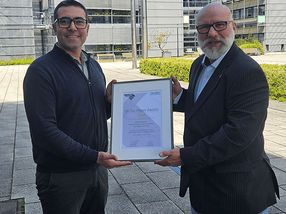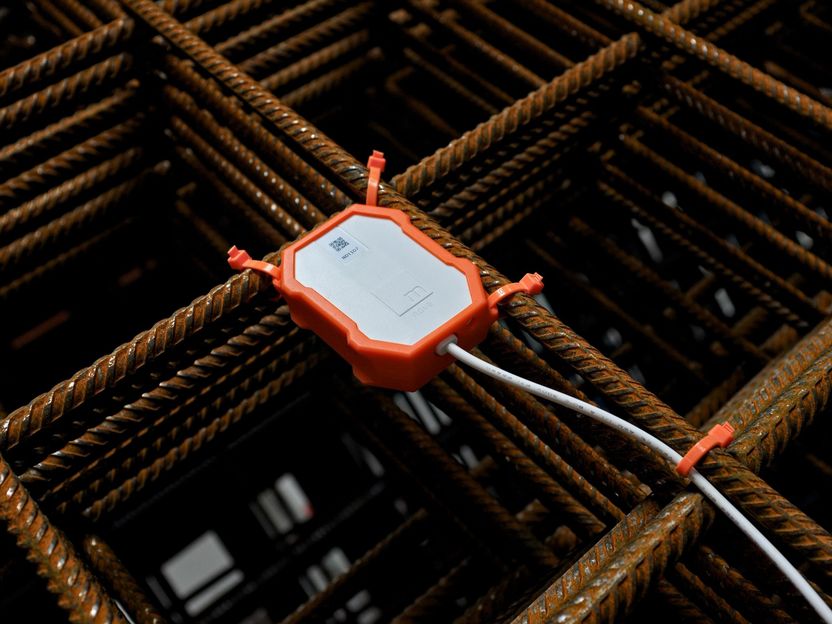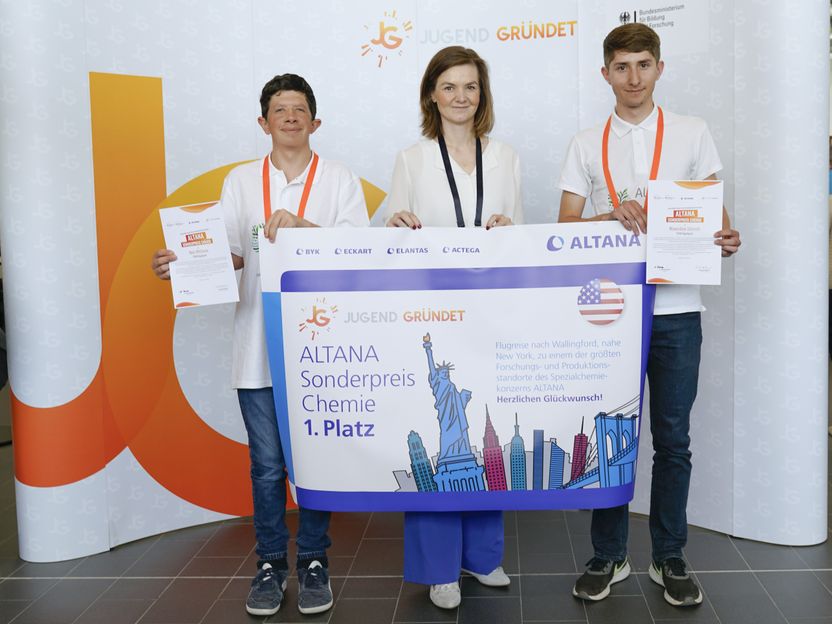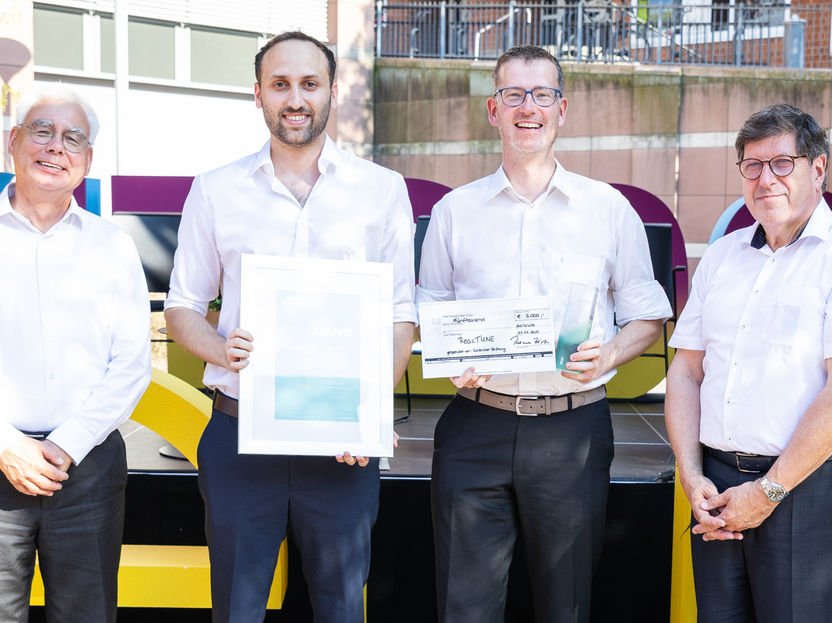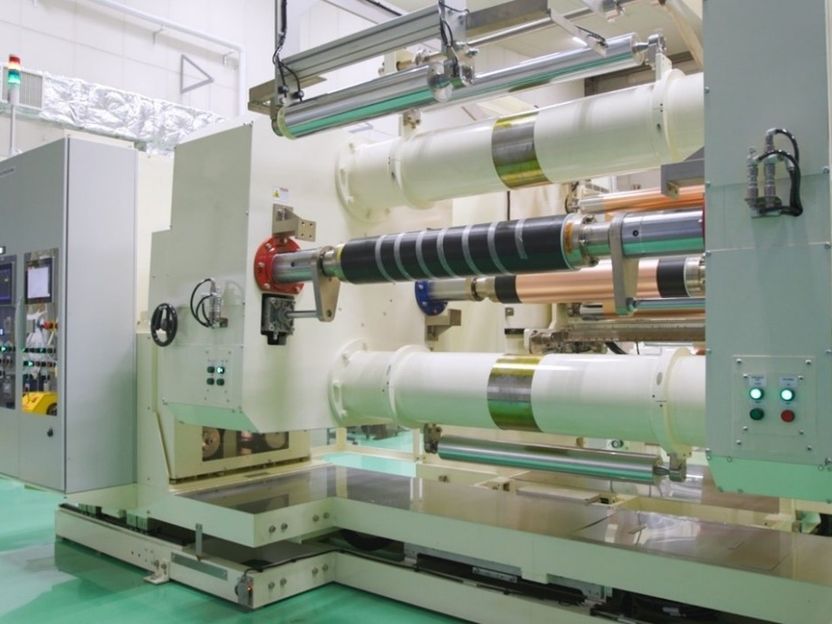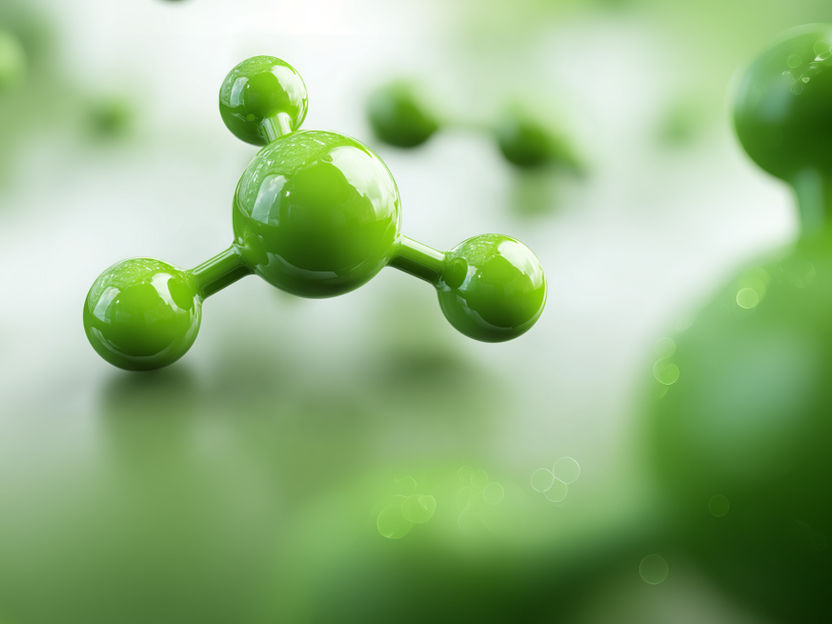Versatile new polymer material
Highly efficient metal catcher and building block for environmentally friendly batteries
Researchers at Ulm University have developed an organic material with extraordinary properties: The novel polymer is extremely effective at recovering valuable precious metals such as gold or palladium from solutions, separating toxic semimetals and also making batteries more environmentally friendly. The high sulphur content and the sponge-like structure of this thioorthoester polymer are unusual. The results of the project carried out as part of the POLiS (Post Lithium Storage) Cluster of Excellence have been published in Angewandte Chemie Novit. This new journal only publishes outstanding work.
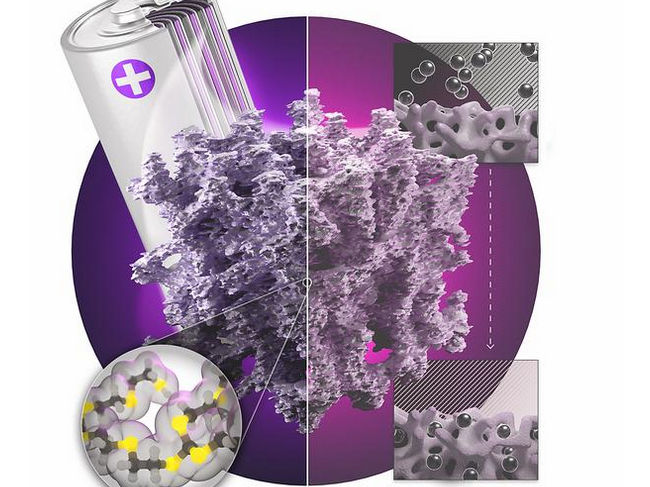
The illustration shows the structure of the sponge-like material with the two applications in a battery cathode (left) and for the deposition of metal ions (right)
Dr. J. Richers, Dr. C. Kühne
The special feature of the white, flaky material developed by the research group led by Professor Max von Delius from the Institute of Organic Chemistry at Ulm University is an exceptionally high sulphur content of around 50 percent and a highly fissured surface.
"Our material is based on a reaction class not previously used in polymer chemistry - so-called thioorthoester chemistry," explains von Delius. "This uses molecules that are made up of one carbon and three sulphur atoms, like a tripod. This composition naturally gives the material an extremely high sulphur content and leads to strong cross-linking within the polymer. This ensures high stability, insolubility in water and an extremely fragmented surface structure." While the high sulphur content was one of the researchers' goals, the porous structure, which is comparable to a natural sponge, was created more by chance during the synthesis process and turned out to be a fortunate side effect. "This large contact surface means that the sulphur atoms can bind metal ions particularly effectively," says von Delius.
One possible application is the targeted separation of so-called coinage metals such as palladium, gold and silver from solutions. In the case of palladium, which is widely used in the pharmaceutical industry and is similarly expensive to gold, the material achieves better results than the existing so-called scavengers. These are metal scavenging substances used by pharmaceutical companies, for example, to remove palladium residues from medicinal raw materials. Metal binding analyses carried out by a team led by Professor Kerstin Leopold at the Institute of Analytical and Bioanalytical Chemistry revealed a maximum palladium binding capacity of 41.2 milligrams per gram for the thioorthoester polymer. This is almost twice as much as that of an established commercial scavenger.
The polymer is also suitable for environmental applications; for example, to remove problematic substances such as the toxic semi-metal antimony from slag in waste incineration plants. In tests, the new material absorbed up to 2.23 milligrams of antimony per gram of polymer - several times over. Up to 83 percent of the bound substances could be released from the material again, with only a slight loss of performance after several uses. "The ability to selectively separate certain metals is a major advantage," says Leopold.
Environmentally friendly battery with sulphur instead of metal
The new polymer also shows promising properties as a component of modern energy storage systems. As part of the Cluster of Excellence POLiS ("Post Lithium Storage"), the researchers tested the material as a metal-free cathode in lithium-ion batteries. "We observed a stable capacity of around 100 mAh per gram over 1000 charge and discharge cycles. And unlike conventional cathode materials, the new polymer contains no critical metals and has a significantly lower environmental impact," reports von Delius.
The work of the Ulm researchers was not only accepted by the renowned journal Angewandte Chemie International Edition, but was also upgraded to the new journal Angewandte Chemie Novit after receiving top marks in the peer review process - as the first published study in this format, which only publishes articles with exceptional novelty value.
Further development planned with industrial partners
A patent application has already been filed for the newly developed material, primarily due to its outstanding properties as a selective binder for metals such as palladium and antimony. Its use as a metal-free, organic cathode in lithium batteries is also part of the patent application. The research team is currently preparing talks with potential industrial partners to further develop the process towards market maturity in various areas - from chemical product preparation to water purification and energy storage.
Note: This article has been translated using a computer system without human intervention. LUMITOS offers these automatic translations to present a wider range of current news. Since this article has been translated with automatic translation, it is possible that it contains errors in vocabulary, syntax or grammar. The original article in German can be found here.
Original publication
Other news from the department science
Most read news
More news from our other portals
See the theme worlds for related content
Topic World Battery Technology
The topic world Battery Technology combines relevant knowledge in a unique way. Here you will find everything about suppliers and their products, webinars, white papers, catalogs and brochures.

Topic World Battery Technology
The topic world Battery Technology combines relevant knowledge in a unique way. Here you will find everything about suppliers and their products, webinars, white papers, catalogs and brochures.

















